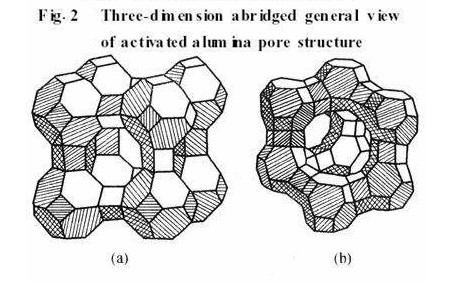In-Depth Analysis: Enhancing Adsorption Performance of Activated Alumina through Pore Structure Engineering
Meta Description: Discover how the strategic engineering of pore structure—including size, volume, and distribution—directly controls the adsorption efficiency of Activated Alumina for water treatment, air drying, and catalysis.
Introduction
Activated Alumina (Al₂O₃) is a cornerstone adsorbent and catalyst carrier in industries ranging from water treatment to petrochemicals. While its high surface area is often cited as a key advantage, the true determinant of its performance lies in the intricate architecture of its pores. Not all high-surface-area adsorbents are created equal. This article provides a deep dive into pore structure engineering, explaining how precise control over porosity can be leveraged to significantly enhance the adsorption capacity, selectivity, and kinetics of Activated Alumina for specific applications.
1. The Trinity of Pore Structure: Size, Volume, and Distribution
To understand how to control performance, we must first define the three pillars of pore structure:
Pore Size: Typically categorized into micropores (<2 nm), mesopores (2-50 nm), and macropores (>50 nm).
Pore Volume: The total void space within the particles, usually expressed in cm³/g.
Pore Size Distribution (PSD): The relative abundance of different pore sizes. A narrow PSD targets specific molecules, while a broad PSD can handle complex mixtures.
2. The Strategic Role of Different Pore Types
Each pore size class plays a distinct role in the adsorption process:
Macropores (>50 nm): The Transport Highways. They do not contribute significantly to surface area but are critical for mass transfer. They allow adsorbate molecules to rapidly diffuse into the particle's interior, preventing kinetic bottlenecks. Without sufficient macropores, the inner adsorption sites remain underutilized.
Mesopores (2-50 nm): The Primary Adsorption Sites. This is where the magic happens for most common applications. Mesopores provide a high surface area while being large enough to accommodate most prevalent pollutant molecules (e.g., fluoride, arsenate, organic vapors). They offer a perfect balance between capacity and diffusion rates.
Micropores (<2 nm): The High-Energy, Selective Traps. These pores contribute enormously to surface area and are excellent for adsorbing very small molecules (e.g., water in deep drying). However, they can be easily blocked by larger molecules and may exhibit slower adsorption kinetics.

3. How to Engineer Pore Structure for Target Applications
The pore structure of Activated Alumina is not accidental; it is meticulously engineered during production. Here’s how it's done and how it applies to different needs:
Precursor and Precipitation Conditions: The choice of aluminum precursor (e.g., aluminum hydroxide) and the conditions during precipitation (pH, temperature, concentration) control the initial gel structure, setting the foundation for the final pore network.
The Art of Calcination (Thermal Activation): This is the most critical step. The calcination temperature directly dictates pore size. Lower temperatures (300-450°C) produce a larger volume of smaller mesopores and micropores, ideal for gas drying. Higher temperatures (500-700°C) cause sintering and pore widening, creating a robust mesoporous structure perfect for catalyst carriers or fluoride removal, where a balance of strength and access is key.
Application-Specific Pore Design:
For Fluoride/Arsenic Removal in Water: A bimodal pore structure is ideal. A network of macropores ensures rapid transport of water to a high volume of 2-5 nm mesopores, which are the perfect size for adsorbing fluoride and arsenate ions.
For Compressed Air/Gas Drying: A combination of micropores and small mesopores is preferred. This maximizes the surface area for capturing tiny water molecules, achieving extremely low dew points.
For Catalyst Carriers: A well-defined, narrow mesopore distribution (e.g., 5-15 nm) is crucial. This ensures uniform dispersion of the active catalytic metal and facilitates the rapid diffusion of reactant and product molecules, preventing coking and deactivation.
4. Beyond Capacity: The Impact on Kinetics and Regeneration
A well-designed pore structure doesn't just increase capacity; it improves the overall process economics.
Faster Adsorption Kinetics: Optimal macropore and mesopore networks reduce internal diffusion resistance, allowing the adsorbate to reach active sites more quickly. This means smaller, more efficient equipment can be used.
Easier Regeneration: During regeneration (e.g., temperature swing or pressure swing desorption), a well-interconnected pore network allows for the easy escape of the desorbed molecules. Poor structure can lead to trapped molecules, higher energy costs for regeneration, and accelerated degradation of the adsorbent.
Conclusion: From Generic Adsorbent to Tailored Solution
Viewing Activated Alumina merely as a commodity adsorbent is a missed opportunity. By understanding and strategically engineering its pore architecture, it can be transformed into a high-performance, application-specific solution. Whether the goal is faster kinetics, higher capacity, superior selectivity, or longer lifespan, the key lies in the precise control of the invisible world within—the pore structure.
For engineers and formulators, partnering with a supplier that masters pore structure engineering is the first step toward optimizing your adsorption processes and gaining a competitive edge.
Key words:
Activated Alumina, Pore Structure, Adsorption Performance
pore size distribution, mesopores, calcination temperature, fluoride removal, catalyst carrier, gas drying, engineered adsorbent
Can't find what you're looking for ?
Leave a Message we will call you back quickly!
Get in Touch
*We respect your confidentiality and all information are protected.

